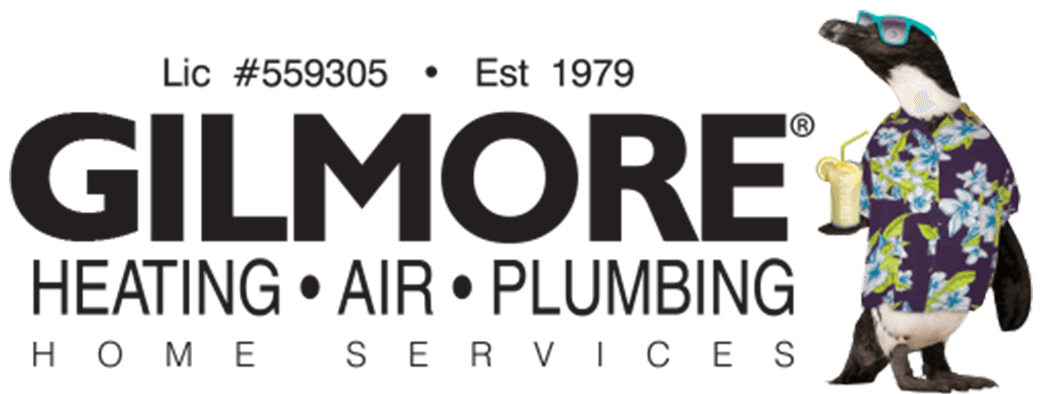Five Common Causes of Weak Airflow
Think you may have weak airflow in your home? There are five common causes of weak airflow that many Sacramento homeowners experience. Read on to discover why this may be occuring in your home.
Five Common Causes of Weak Airflow at Home
At Gilmore Heating, Air and Plumbing, we get tons of questions about room-to-room ventilation in homes. Sacramento homeowners can mix the warmth of a room with airflow.
There are several explanations why the airflow could be lower. Below, we’ll look at some of the more common problems that cause friction and instability in HVAC systems. Our Sacramento heating experts detail below.

1. Dirty Furnace Filters
Think of dirty furnace filters as an example of friction. The thickness of the furnace filter should be taken into consideration when the ductwork is built. Then, the speed of the fan is adjusted. If the thickness is raised because the filter is polluted, it increases the pressure of the flowing air. Thus, this limits it and creates irregular or insufficient air distribution.
Indoor air quality is a widely contested concern in today’s world. The furnace filters are a big part of this discussion. They’re coming with the MERV ratings. The MERV value stands for Minimal Efficiency Reporting Value.
The MERV ranking varies from 1 to 16. The higher the MERV value on the filter, the fewer dust particles and other pollutants that can move through it. The MERV scale reflects the worst possible filter output in extracting particles from 0.3 to 10 microns in size (really small stuff!).
Some of the typical particles the filters are screened for include:
- Pollen’s
- Dust mite
- Textile and carpet fiber
- Spores of mold
- Dust
- Bacterium
- Smoke with cigarettes
Residential Filters
Most residential systems can properly eliminate airborne pollutants with a filter graded as MERV 7 to 12. The higher the MERV rating, the smaller the pores are to allow air to flow into your furnace filter. Additionally, smaller pores can produce more airflow resistance than the device is built to accommodate, making it inefficient. This decrease in airflow will then create the same problems that the filter is supposed to solve. It will make indoor air quality worse and place a dangerous amount of pressure on your furnace or AC system fan.
So, whether you’re having trouble with the airflow of your furnace, or if you’re curious why your furnace doesn’t blast hard enough, make sure your system’s engine is rated to handle high MERV filters.
If this is not the case, you would need to adjust the filter on a daily basis (more so than for a standard filter) due to airflow constraints.
2. Crushed, Blocked, Poorly Mounted, and Disconnected Duct Runs
This one may sound like a no-brainer, but we’re seeing it all the time. Each duct operating in a home should be built and constructed to carry a certain amount of air to a specified room. Additionally, anything that changes the configuration of the ductwork will also adjust the capacity to produce the right volume of air.
If the ductwork is built in a way that limits the flow of air, the region can never get the air it was intended to get. The longer the air has to fly, and the more twists and curves it has to go around. Thus, the more noise is produced. Then, the less likely it is to make it where it is supposed to go. Put in a collapsed or partly crushed sprint, twisted or kinked piece of flex, and you’re not going to get the air you’re expected to get.
Wondering how to maximize the flow of air to one room in your home? Are you living with no heat coming out of the vents in a room? Contact our Sacramento heating experts for an inspection of the HVAC system!
3. Leakage
About 90% of homes in North America have air duct systems that contain small gaps and cracks. They reduce the level of comfort and raise the cost of heating and cooling.
The Energy Department informs us that the average duct device has about 35-50 percent leakage. This means that 35 to 50 per cent of the air expected to fly from the air handler. This then goes to a certain section of the home that would not make it to its intended location.
In the world of home energy conservation, this is always overlooked. The common explanation for this is that if the air spills inside the house, it’s not that much of a deal. This is because it’s still inside the air conditioning area and heating or cooling the home. This line of thinking just makes sense if you’re only concerned about the electricity you’ve wasted, not the warmth of the rooms you’re trying to heat and cool.
Additionally, that’s not to suggest that leakage outside the conditioned area doesn’t affect comfort. It sure does-in a big way! But the fact that air does not enter the planned rooms also impacts warmth, whether it escapes inside the house or not. Sealing a device from the inside out using a method known as Aeroseal will improve airflow by up to 50%!
Until all the air that the air handler is attempting to produce is accounted for, it is important to balance the duct system. As follows, this will ensure that each room receives the intended amount of air.
4. Not Enough Return Air
A traditional forced-air HVAC system is equipped with a closed-loop system. In an ideal world, a certain volume of air is created. As follows, that air is dispersed around the house, such that the same amount of air is returned from the home, conditioned, and then circulated.
Each region that absorbs a measured volume of air should also be able to return the same amount of air to the system. To determine how to tell if there isn’t enough return air if:
- The region is being pressurized.
- The amount of air movement that can be obtained is reduced.
- It’s a similar idea to blowing a straw: as long as all ends are open, you can blow as much air as the size of the straw allows. But as soon as one end is limited, the amount of air that can flow through the straw becomes limited. Close one end all the way, and the amount of air you will blow into becomes finite!
5. Undersized Systems or Ductwork
Air travels into the ductwork and to its intended position, preserving the right static pressure. If the ductwork is too big, the air pressure will plummet, without finding its intended destination.
More often than not, however, the ductwork is too thin. This would cause a constraint to the extent that the measured volume of airflow does not reach its desired destination.
Contact A Profession HVAC Company
From blocked or leaky ducts to clogged filters and filthy coils, we’ve seen it all. If you have a problem with your air, you can rely on our Sacramento HVAC contractors to get to the root of your problems. We will produce affordable, consistent services.
We realize that low airflow is typically the result of one or more problems involving repair or Sacramento HVAC maintenance. With a competent inspection of heating and cooling, our technicians will fix your airflow in no time!

